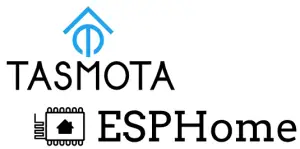We’ve talked a lot about the importance of Local Control for your smart home’s central brain (your hub). But what about the individual devices themselves? The market is flooded with powerful, innovative, and often affordable Wi-Fi smart devices that, by default, are shackled to a manufacturer’s cloud. While convenient, these devices pose inherent risks: they can send your data to corporate servers, and they cease to function if the internet is down or the manufacturer decides to abandon them.
For the Thinking Home enthusiast, the ultimate expression of digital ownership goes a step further: it involves taking control of the very software that runs on these devices. This is where open-source firmware like Tasmota and ESPHome come in – they are the liberators that transform potential liabilities into secure, private, and exceptionally reliable assets.
Tasmota: The Universal Translator for Commercial Hardware
Tasmota is an open-source firmware designed to replace the factory software on a vast number of commercial Wi-Fi smart devices, particularly those built with common Espressif ESP microcontrollers (often found in devices from Sonoff and Tuya).
- How it works: The process, known as flashing, completely severs the device’s connection to the manufacturer’s cloud servers. Once flashed, the device can be controlled entirely on your local network using open standards like MQTT (Message Queuing Telemetry Transport) or through its own on-device web interface.
- Benefits: This liberates the device from its default cloud dependency, enhancing your privacy, improving response speed, and ensuring it continues to function even if the original manufacturer goes out of business. Tasmota is often the tool of choice for repurposing and taking true ownership of existing commercial hardware.
ESPHome: The Native Integrator for Custom DIY Devices
If Tasmota is the universal Swiss Army Knife, ESPHome is the custom-forged instrument, especially designed for seamless integration with Home Assistant.
- How it works: ESPHome dramatically simplifies the creation of custom firmware for low-cost ESP microcontrollers. It replaces the need for complex programming with simple, human-readable configuration files written in YAML. You define everything about the device – its hardware, sensors, and even on-device automations – in a text file. The ESPHome Dashboard then compiles a lean, optimized firmware containing only the components you defined, which can be uploaded to the device wirelessly.
- Benefits: ESPHome devices are designed for native integration with Home Assistant. As soon as a new ESPHome device is powered on, it’s automatically discovered by Home Assistant, with all its sensors and controls exposed as native entities. This tight integration, combined with its ease of use, makes ESPHome the ultimate tool for creating bespoke, DIY smart devices tailored exactly to your needs.
By embracing Tasmota and ESPHome, you move beyond just controlling your smart home hub; you gain control over the firmware on the endpoint devices themselves. This provides the ultimate defense against corporate abandonment, giving you true digital ownership and ensuring your Thinking Home remains entirely under your command.
For a deeper technical dive into liberating your hardware with these powerful tools, including prerequisites and detailed comparisons, turn to Appendix Q: Your Journey Continues: Advanced Topics for the Thinking Home in The Thinking Home.

